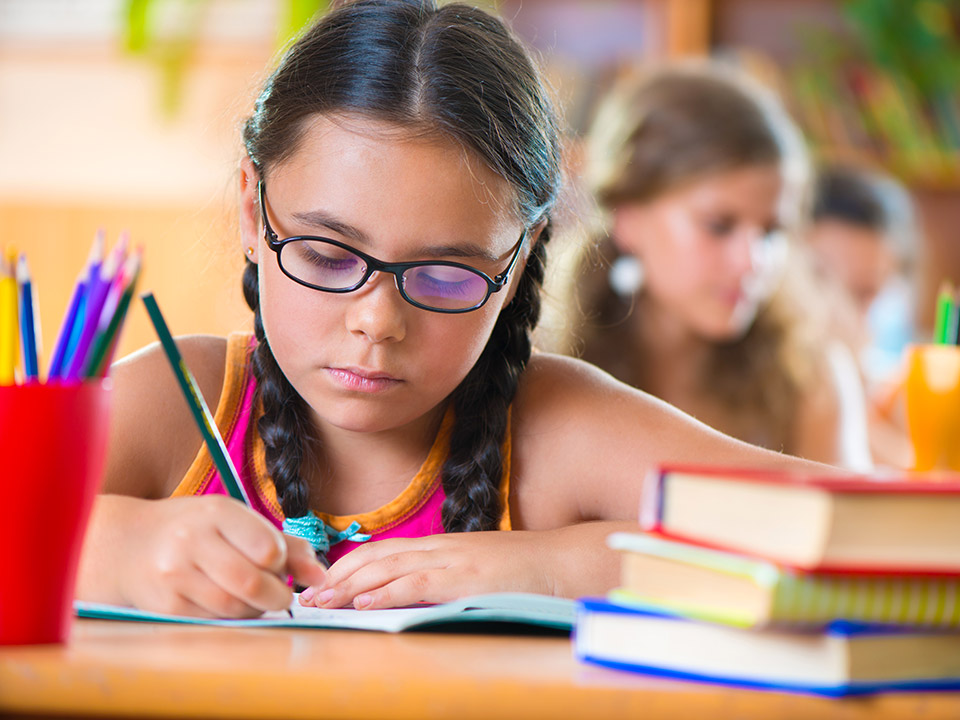Signs Your Child Needs Glasses
Studies show that more than 15% of kids in the U.S. have eye or vision disorders. And because vision is critical in learning and development, early and regular eye exams are essential. Sometimes, it’s easy to know when your child needs an appointment with an ophthalmologist.
When your kid complains of blurry or double vision, realize it is time to see a doctor. Also, problems like challenges seeing the blackboard or whiteboard at school are significant signs that your child needs glasses.
But in most cases, children may not immediately realize they have vision problems. As a parent, you must keep a close check on your kid. Look for any severe symptoms indicating your kid’s vision needs attention.
This article highlights the pointers that your child needs glasses.
Indications that Your Child Needs Glasses
Symptoms include:
1. Squinting
A child might never know that struggling to see an object near or far away is a serious concern. As a parent, you should take immediate action if your kid wrinkles their face or turns their head in an attempt to see clearly. Sometimes, children squint their eyes when there is strong and bright light.
And because squinting helps improve eyesight momentarily, it might be difficult to notice any vision problem in your child. When your kid wrinkles their face, the shape of the eye slightly changes. Moreover, squinting reduces the amount of light that enters the eye. It makes it easier to focus on an object.
Squinting is a pointer to a possible eye problem. If you notice your child squinting, know they’re possibly compensating for poor vision. Take them to a doctor for a comprehensive eye exam.
2. Tilting the Head
Do you ever see your kid tilt their head when looking at something? One reason for twisting the head is to make up for eye misalignments. When a child tilts their head downwards, they try to see past the eyelid on their way.
Most cases of tilting the head are a result of eye muscle imbalance. Your child may also twist their head because they or suffer from ptosis. A child may tilt their head to make an object appear directly before them. Unfortunately, they may never see this as a vision problem that requires urgent attention.
If your child tilts their head to see clearly, it’s time you take them to an ophthalmologist.
3. Rubbing Eyes
Many parents will agree that their children rub their eyes when they want to sleep. It’s normal for almost every kid. Rubbing eyes is also a response to allergies. But rubbing eyes that don’t stop is a sign of vision problems. Sometimes, we experience eye fatigue, a symptom of many vision problems. So, if your kid rubs their eyes frequently, it might be the best time to go to the doctor for a glass prescription.
4. Sitting Too Close to the Television
Children can be dramatic sometimes, and sitting too close to the television can be one of them. However, if you notice your child prefers sitting abnormally close to the tv, seek help from your doctor.
Also, if your kid lowers their head whenever they want to read, they probably struggle with nearsightedness. Thus, they can move closer to the television or lower their heads while reading to make the images or words larger and more apparent.
Nearsighted children struggle to see objects at a distance. At a close range, their vision is clear. When they move their eyes more relative to an object, the thing comes closer to their clear focal point, making the image larger.
Next time your kid insists on watching their favorite cartoon from close range, don’t assume the behavior. It could be a case of nearsightedness that’s advancing.
5. Losing a Place While Reading
Most children learning to read will finger-point every word. Usually, it’s a sign that a child can read independently. If your child persists with the reading habit, there could be an uncorrected vision problem.
Children who find reading difficult without pointing at the words probably have amblyopia. Amblyopia is a condition that makes your eyes see things as crowded. Amblyopic eyes see words, letters, or pictures as very close to one another.
Also, look out for astigmatism when your kid skips a line or two while reading.
6. Covering One Eye to Read
Children are cunning; you may never know when they’re joking or serious. Your kid might cover one of their eyes to read, which might appear normal. However, if they have to cover one of their eyes to see or read correctly, you should immediately book an appointment with an ophthalmologist.
If left uncorrected, vision problems in one eye can increase your child’s risk of developing amblyopia. Also, covering one eye might be a sign of double vision and the need for glasses.
7. Frequent Headaches
Some headaches disappear within a day. Yet other headaches are temporal and more frequent. Most nearsightedness children struggle to bring close objects into sharper focus. Often, the child uses extra power to clear their blurry vision. As a result, the kids experience frequent headaches.
8. Clumsiness
Kids will always kick almost every object they come across. In the process, they can end up tripping. Also, most kids learning how to walk will bump into anything. Yet, regular tripping and bumping into objects might indicate an eye disorder that needs prescription glasses.
Get Glasses for Your Child
There can never be a better prevention method than early diagnosis. Dealing with children is tricky already. Monitoring them to discover whether they have vision problems can thus be challenging. Once your child starts school, you should take them for screening at least once a year. If the school-based vision programs don’t work for you, seek a more professional examination by your ophthalmologist. You can look for the above signs to determine whether your child needs glasses.


